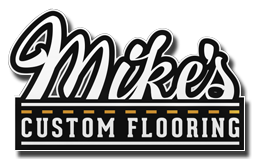Wood flooring can bring warmth and character into our homes. When it comes to installing wood flooring in your home, the type you use may have to depend on where you’re planning to use it, keeping wear and tear in mind. Mike’s Custom Flooring explore the different types of solid hardwood floors below.
History of Wood Flooring
The earliest American flooring was wood. It was usually old-growth pine that was denser than the trees of today. These floors were left unfinished and swept clean when needed and were typically left untreated because varnishes were too expensive. Only the wealthiest homeowners would have rugs. Through most of the 19th century, wood floors were far less popular than carpeting due to the fact that they were easier to get thanks to manufacturing improvements. Linoleum was invented in 1864. In the late 19th century, there was a desire for simpler interiors with wood floors becoming the focal point of the “hygienic” home because they were easier to keep clean. Wood floors became more desirable. The early 1900s brought widths and grades of wood that became standardized with oak, maple, fir and yellow pine being the favorites. Wood flooring reached its peak in 1949 when plywood, synthetic fiber carpeting, and vinyl floors were introduced. These pretty much dominated the market in the 1960s, along with the new kid on the block: engineered flooring. By the time the 1980s rolled around, solid wood flooring was back in demand, and its popularity never stopped growing. The demand for the engineered flooring has also increased. Just how do the two compare?
Solid Hardwood Flooring Types
Solid hardwood flooring is one solid piece of wood sawn from a log. The standard thickness is ¾”, but there are also options of 5/16” and ½” thick. You will find even thicker boards in older homes. Homes that were built before 1850 have floors as thick as 11/8 “. There are three types of solid hardwood cuts:
• Plain-sawn. This is a cut done straight across the log, with rings 30 degrees or less to the face of the board. It will have a flame pattern.
• Quarter-sawn. This cut is done after the board is divided into fourths and shows off the growth rings of the wood at a 60- to 90- degree angle, with some flecks.
• Rift-sawn. This cut is done perpendicular to the grain-growth. Rings will show at a 45- angle and up to a 60- degree angle.
When you consider the swelling and shrinking that comes with wood flooring because of moisture, rift-sawn and quarter-sawn boards are more stable whereas plain-sawn boards will move more. Typically, the boards either have a square edge or a beveled edge. The square edge will create a smooth surface with no gaps from one board to the next. The beveled edge will have a groove between the boards and creates a rustic look. There is also the option of a microplaned beveled edge that will create a smaller groove and is good at hiding uneven planks.
Harwood Flooring Installation & More in Charles Town & Eastern Panhandle of Berkeley & Jefferson Counties in WV | Winchester & Frederick County | Round Hill & Loudoun County | Berryville & Clarke County | Herndon & Fairfax County VA
There’s much more to learn about with hardwood and engineered flooring. Mike’s Custom Flooring can answer any questions you have. Give us a call today!





